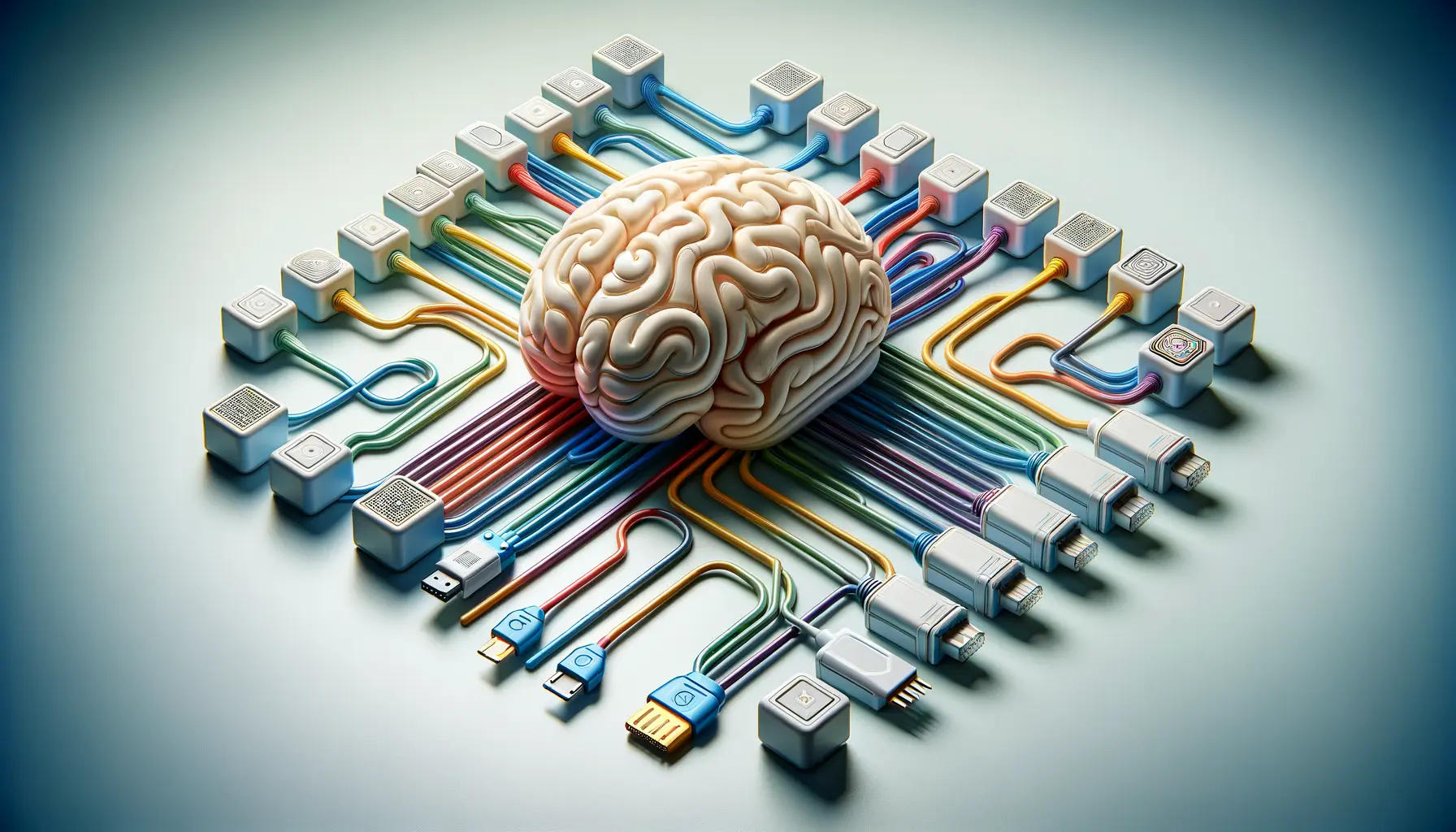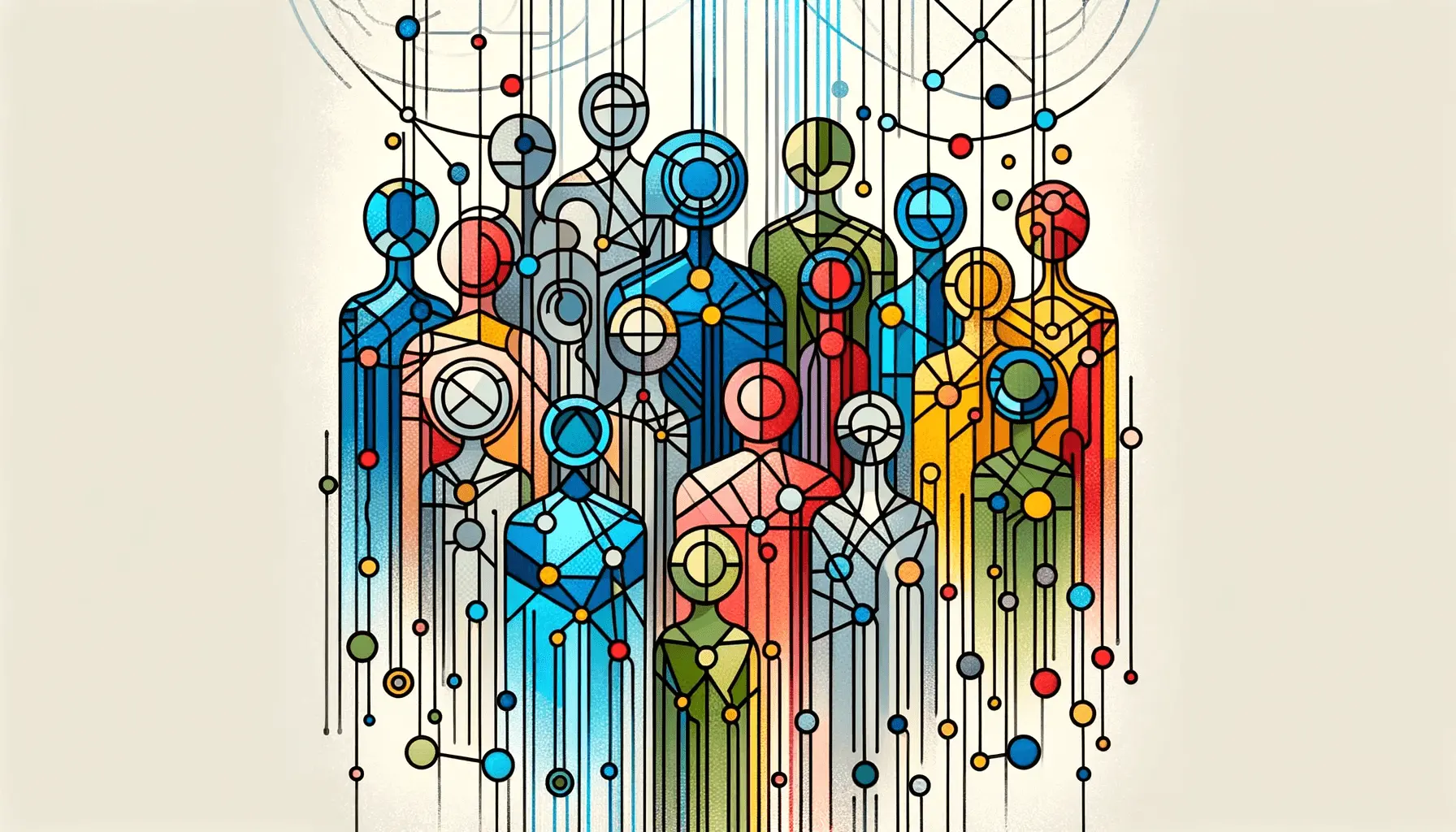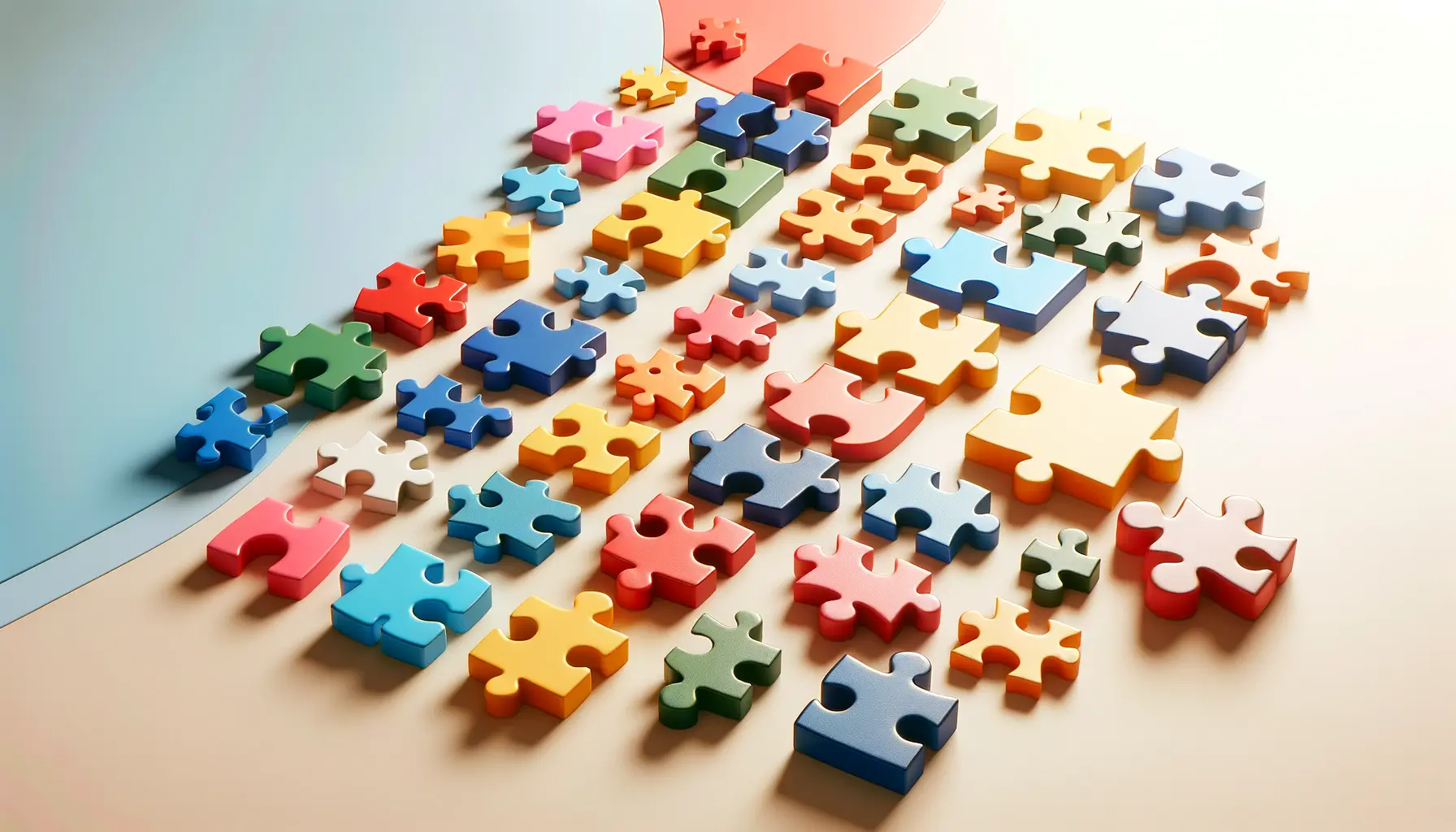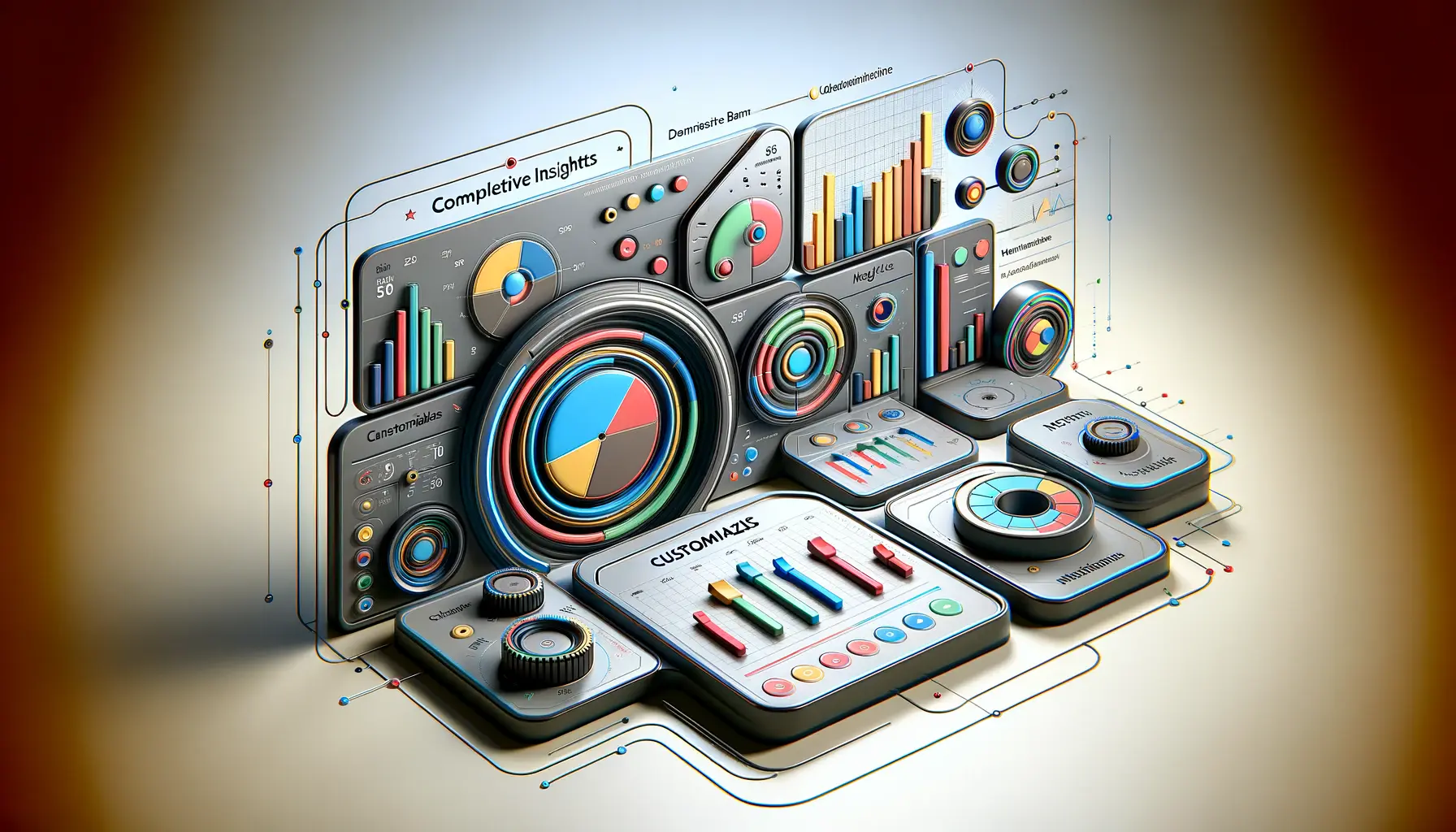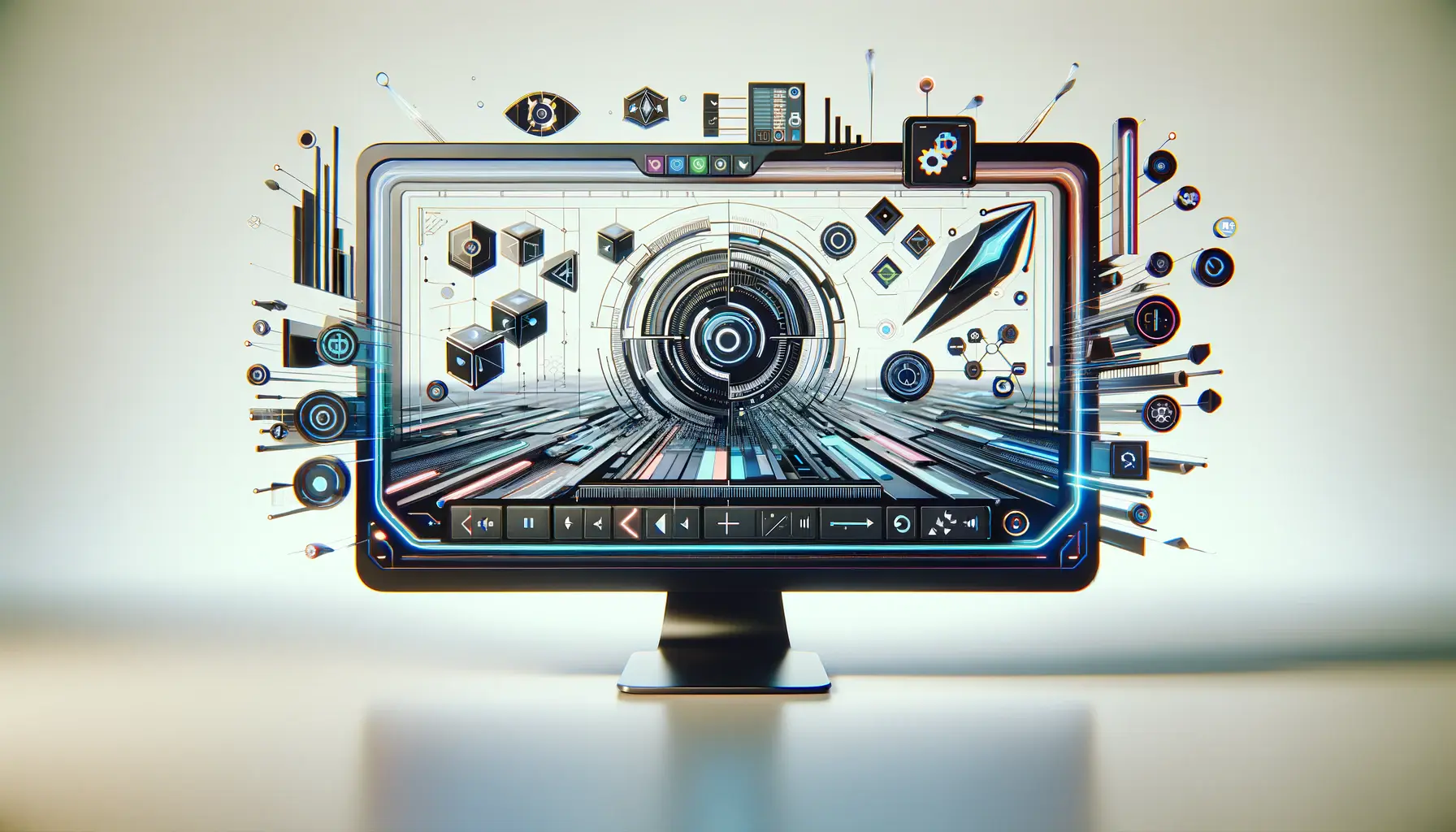The advent of AI-driven art generation has marked a significant milestone in the intersection of technology and creativity, with DALL-E emerging as a frontrunner in this innovative field.
This AI model, developed by OpenAI, has the remarkable ability to generate images from textual descriptions, offering a wide array of possibilities for creators, designers, and businesses alike.
The essence of customizing DALL-E outputs lies in harnessing this technology to meet specific needs, whether for branding, personal projects, or exploratory art.
Understanding the capabilities and limitations of DALL-E is crucial for effectively leveraging its potential.
The model’s ability to interpret and visualize complex prompts has opened new avenues for creative expression.
However, achieving the desired outcome often requires a nuanced understanding of how to craft prompts that align with the AI’s processing capabilities.
This article delves into strategies for customizing DALL-E outputs, ensuring that the resulting images not only captivate the imagination but also serve the intended purpose.
- Exploring the Basics of DALL-E
- Optimizing Prompts for Precision
- Mastering the Art of Iteration
- Understanding DALL-E’s Creative Constraints
- Enhancing Visual Storytelling with DALL-E
- Exploring the Potential of DALL-E in Education
- Future Directions for DALL-E Development
- Embracing the Future with DALL-E
- DALL-E Outputs Customization FAQs
Exploring the Basics of DALL-E
At its core, DALL-E is a groundbreaking AI model capable of generating images from textual descriptions.
This capability stems from its training on a diverse dataset of images and their corresponding descriptions, enabling the AI to understand and interpret a wide range of concepts and styles.
The process begins with a user inputting a descriptive prompt, which DALL-E then translates into a unique image output.
The technology behind DALL-E is both complex and fascinating, involving deep learning algorithms that analyze the relationships between words and the visual elements they describe.
By understanding these relationships, DALL-E can produce images that are not only relevant to the prompt but also creative and sometimes even surprising in their interpretation.
Customizing Outputs for Specific Projects
Customizing DALL-E outputs for specific projects involves a careful consideration of the prompt’s structure and content.
The more detailed and specific the prompt, the more likely DALL-E is to generate an image that meets the user’s expectations.
This includes specifying styles, colors, and even the mood of the desired image.
For instance, a prompt describing a “sunset over a serene lake surrounded by mountains” can be further customized by adding details about the color palette or the style (e.g., impressionist, photorealistic).
Moreover, experimenting with different prompts and iterations is a key part of the customization process.
DALL-E’s ability to generate multiple outputs for a single prompt allows users to explore a variety of outcomes before selecting the one that best fits their needs.
This iterative process encourages creativity and can lead to unexpected and inspiring results.
The key to customizing DALL-E outputs effectively lies in mastering the art of prompt crafting, balancing specificity with creativity to guide the AI towards the desired outcome.
Optimizing Prompts for Precision
The art of optimizing prompts to achieve precise outputs with DALL-E involves a blend of specificity, creativity, and strategic thinking.
Crafting a prompt that leads to the desired image requires an understanding of how DALL-E interprets language and visualizes concepts.
This section explores techniques for refining prompts to enhance the accuracy and relevance of DALL-E’s outputs.
Effective prompt optimization often hinges on the balance between detailed descriptions and leaving room for the AI’s creative interpretation.
Users must navigate the fine line between over-specifying, which can lead to generic outputs, and under-specifying, which might result in images that are too broad or off-target.
Incorporating Descriptive Elements
One of the first steps in optimizing prompts is to incorporate descriptive elements that clearly convey the intended visual outcome.
This includes:
- Visual details: Describing key components of the image, such as objects, setting, and characters, helps DALL-E understand what to include.
- Color schemes: Mentioning specific colors or overall color themes can guide the AI in creating images that match your vision.
- Style and mood: Specifying an artistic style (e.g., surrealism, realism) or mood (e.g., melancholic, joyful) can influence the aesthetic of the generated image.
Utilizing Advanced Techniques
Beyond basic descriptions, several advanced techniques can further refine prompts:
- Negative prompts: Indicating what you do not want in the image can help narrow down the possibilities and avoid unwanted elements.
- Iterative refinement: Starting with a broad prompt and gradually adding details based on initial outputs can lead to more precise customizations.
- Combining concepts: Merging multiple ideas or themes into a single prompt can produce unique and complex images that cater to specific needs.
By employing these strategies, users can significantly enhance the specificity and relevance of their prompts, leading to DALL-E outputs that more accurately reflect their vision.
The process of prompt optimization is both an art and a science, requiring experimentation and adjustment to discover the most effective formulations.
Experimentation is key in prompt optimization. Don’t hesitate to adjust and refine your prompts based on the outputs you receive, as this iterative process is crucial for achieving the best results.
Mastering the Art of Iteration
The journey to perfecting DALL-E outputs often involves a cyclical process of iteration, where each cycle brings you closer to your envisioned result.
Mastering this art of iteration is crucial for anyone looking to customize DALL-E outputs for specific needs.
It’s a process that encourages experimentation, learning, and refinement, ultimately leading to the creation of more precise and impactful images.
Iteration with DALL-E is not just about making minor adjustments; it’s about understanding how different elements of a prompt influence the final output.
This understanding allows for more targeted changes in subsequent attempts, enhancing the efficiency and effectiveness of the customization process.
Strategies for Effective Iteration
To make the most out of the iterative process, consider the following strategies:
- Feedback loops: Use the outputs of each prompt as feedback for refining your next attempt. Analyze what worked, what didn’t, and why, to inform your adjustments.
- Variation testing: Experiment with variations of your prompt, including different descriptions, styles, and details, to see how each change affects the outcome.
- Incremental adjustments: Make small, incremental changes to your prompts rather than overhauling them completely. This helps in pinpointing exactly what leads to improvements.
Leveraging DALL-E’s Capabilities
Understanding DALL-E’s capabilities and limitations is key to effective iteration.
This includes recognizing the types of prompts it responds well to, the styles it can replicate, and the level of detail it can accurately render.
Leveraging this knowledge can significantly streamline the iterative process.
Additionally, taking advantage of DALL-E’s ability to generate multiple variations from a single prompt can provide a broader range of options to choose from.
This not only offers immediate alternatives but also insights into how slight modifications in wording can lead to different interpretations by the AI.
Ultimately, mastering the art of iteration with DALL-E is about embracing the creative process.
It’s a journey of discovery, where each step brings new insights and possibilities.
By adopting a mindset of continuous improvement and experimentation, users can unlock the full potential of DALL-E to meet their specific needs.
True mastery in customizing DALL-E outputs comes from the willingness to iterate, experiment, and learn from each cycle. Embrace the process, and you’ll discover the vast creative potential that DALL-E offers.
Understanding DALL-E’s Creative Constraints
While DALL-E’s ability to generate images from textual prompts offers immense creative freedom, it’s important to recognize and understand the model’s inherent constraints.
These limitations are not just technical but also conceptual, influencing how prompts are crafted and how outputs are interpreted.
Understanding these constraints is crucial for effectively customizing DALL-E outputs to meet specific needs.
The creative constraints of DALL-E stem from its training data, the complexity of prompts it can understand, and ethical guidelines designed to prevent misuse.
Navigating these constraints requires a nuanced approach to prompt crafting and an awareness of the ethical considerations surrounding AI-generated content.
Navigating Technical and Conceptual Limits
Technical limitations relate to the model’s ability to accurately interpret and visualize complex prompts.
This includes challenges with:
- Detail and specificity: While DALL-E can generate detailed images, there’s a limit to the specificity and accuracy it can achieve, especially with highly complex or abstract concepts.
- Consistency: Achieving consistency in style, color, and composition across multiple images can be challenging, particularly when trying to maintain a specific aesthetic.
- Understanding context: DALL-E may struggle with prompts that require a deep understanding of context or cultural nuances, leading to outputs that miss subtle but important details.
Addressing Ethical Considerations
Beyond technical constraints, ethical considerations play a significant role in how DALL-E can be used.
OpenAI has implemented guidelines to prevent the creation of harmful or inappropriate content, which includes restrictions on:
- Content type: Prompts that could lead to the generation of offensive or sensitive content are restricted, limiting the range of images DALL-E can create.
- Intellectual property: Care must be taken to avoid generating images that infringe on copyrighted material, respecting the rights of original creators.
- Realistic depictions: There are constraints on creating images that could be mistaken for real people or events, to prevent misinformation or harm.
Understanding and respecting these constraints is essential for anyone looking to utilize DALL-E for creative projects.
By acknowledging the model’s limitations and ethical guidelines, users can craft prompts that are not only effective but also responsible, ensuring that the outputs align with both their creative vision and societal norms.
While DALL-E opens up a world of creative possibilities, it’s important to navigate its constraints with awareness and responsibility, ensuring that the technology is used in a way that is both innovative and ethical.
Enhancing Visual Storytelling with DALL-E
Visual storytelling has always been a powerful medium for conveying emotions, narratives, and complex ideas.
With the advent of AI technologies like DALL-E, creators now have an unprecedented tool at their disposal to enhance their storytelling capabilities.
By customizing DALL-E outputs, storytellers can create vivid, compelling images that align perfectly with their narrative needs, adding depth and dimension to their stories.
The key to leveraging DALL-E for visual storytelling lies in the ability to craft prompts that encapsulate the essence of the story you wish to tell.
This involves a deep understanding of narrative elements, character details, and the emotional undertones that you want the visuals to convey.
Creating Compelling Characters and Settings
One of the first steps in using DALL-E for storytelling is to create characters and settings that resonate with your audience.
This involves:
- Character design: Crafting detailed descriptions of characters, including their appearance, clothing, and emotional expressions, to bring them to life through DALL-E’s outputs.
- Setting the scene: Describing the environment and context in which your story takes place, from bustling cityscapes to serene landscapes, to create immersive backgrounds for your narrative.
Conveying Emotion and Atmosphere
Beyond characters and settings, the emotional tone and atmosphere of your story are crucial for engaging your audience.
DALL-E can be used to generate images that:
- Reflect mood: Use color, lighting, and composition to evoke specific emotions, whether it’s the tension of a thriller or the warmth of a romance.
- Symbolize themes: Create visuals that symbolize key themes or motifs in your story, adding layers of meaning that enhance the narrative depth.
By carefully crafting prompts that reflect these narrative elements, storytellers can use DALL-E to produce images that not only complement their stories but also enrich them.
The ability to generate bespoke visuals on demand opens up new avenues for creativity, allowing storytellers to experiment with different visual styles and narrative techniques.
DALL-E’s potential for enhancing visual storytelling is immense, offering storytellers a unique tool to visualize their narratives in ways that were previously unimaginable. Embrace this technology to bring your stories to life in vibrant detail.
Exploring the Potential of DALL-E in Education
The integration of DALL-E into educational settings presents a fascinating opportunity to revolutionize how subjects are taught and understood.
By generating bespoke images tailored to specific educational content, DALL-E can enhance learning experiences, making abstract concepts tangible and complex ideas more accessible.
This potential extends across various disciplines, from history and science to art and literature, offering educators a versatile tool to complement their teaching methods.
Utilizing DALL-E in education requires a thoughtful approach to prompt crafting, ensuring that the generated images accurately reflect the educational content and objectives.
This involves not only a deep understanding of the subject matter but also an awareness of how visual aids can best support learning outcomes.
Visualizing Complex Concepts
One of the key benefits of DALL-E in education is its ability to visualize complex concepts that are difficult to convey through traditional teaching methods.
This includes:
- Scientific phenomena: Generating images that illustrate scientific concepts, such as cellular structures or astronomical events, can make these topics more relatable and understandable.
- Historical events: Creating visuals that depict historical moments or figures can bring history to life, fostering a deeper connection with the past.
Enhancing Creative Expression
Beyond its application in teaching factual content, DALL-E also offers opportunities for enhancing creative expression among students.
By engaging with the technology, students can:
- Develop storytelling skills: Crafting prompts for DALL-E allows students to explore narrative construction, character development, and visual storytelling techniques.
- Experiment with art and design: Students can experiment with different artistic styles and visual concepts, encouraging creativity and exploration in visual arts.
The potential of DALL-E in education is not just about enhancing the delivery of content but also about inspiring curiosity, creativity, and a deeper engagement with learning materials.
As educators and students alike become more familiar with the capabilities of DALL-E, its role in education is likely to expand, offering new and innovative ways to enrich the learning experience.
Consider the endless possibilities that DALL-E offers for education. From visualizing the unseen to unlocking creative potential, this technology has the power to transform traditional educational paradigms and inspire a new generation of learners.
Future Directions for DALL-E Development
The trajectory of DALL-E’s development points towards an exciting future where the boundaries between AI-generated art and human creativity become increasingly blurred.
As the technology evolves, we can anticipate enhancements in image quality, creativity, and the ability to understand and interpret complex prompts more effectively.
This progress will not only expand the tool’s applicability across various fields but also democratize creative expression, making it accessible to a broader audience.
Future iterations of DALL-E are likely to focus on improving the model’s understanding of context and nuance, enabling it to generate images that are not just visually stunning but also rich in meaning and relevance.
This involves advancements in natural language processing and a deeper integration of cultural and contextual awareness into the AI’s learning algorithms.
Enhancing User Interaction and Accessibility
As DALL-E becomes more sophisticated, we can also expect improvements in user interaction and accessibility.
This includes:
- Intuitive prompt crafting: Making the process of crafting prompts more intuitive and user-friendly, possibly through the use of guided interfaces or prompt suggestions.
- Customization options: Offering more advanced customization options for users, allowing for finer control over the style, composition, and elements of the generated images.
Expanding the Scope of Creativity
The future of DALL-E also holds the potential for expanding the scope of creativity, by:
- Incorporating mixed media: Generating images that combine different artistic mediums and styles, further blurring the lines between traditional and digital art forms.
- Collaborative creation: Facilitating collaborative projects between AI and human artists, leading to new forms of creative expression that leverage the strengths of both.
The ongoing development of DALL-E promises to usher in a new era of creativity, where the power of AI is harnessed to enhance and amplify human artistic endeavors.
As we look towards the future, the potential for innovation and transformation in the way we create, learn, and communicate is boundless.
The journey of DALL-E, from a novel AI experiment to a tool that redefines the creative landscape, is just beginning.
The future of DALL-E is not just about technological advancements but about reimagining the possibilities of creative expression. As the technology evolves, it invites us to explore new horizons of imagination and innovation.
Embracing the Future with DALL-E
The exploration of DALL-E’s capabilities in customizing outputs for specific needs has unveiled a landscape brimming with potential.
From enhancing visual storytelling to revolutionizing educational methodologies, DALL-E stands at the forefront of a creative revolution.
As we delve into the future directions of DALL-E development, it’s clear that this technology is not just a tool for generating images but a catalyst for innovation across various domains.
Unlocking Creative Potentials
The journey through the intricacies of DALL-E’s functionalities underscores the importance of synergy between human creativity and AI’s computational power.
By mastering the art of prompt crafting and understanding the model’s creative constraints, users can unlock unparalleled creative potentials.
The iterative process of refining DALL-E outputs serves as a testament to the evolving relationship between creators and technology, where each iteration brings us closer to realizing visions that were once confined to the imagination.
Transformative Impacts Across Fields
The transformative impact of DALL-E extends beyond the realm of art and creativity.
In education, DALL-E has the potential to make learning more interactive and engaging, bringing abstract concepts to life through visual representation.
The future of DALL-E in education hints at a paradigm shift where visual aids are not just supplementary but integral to the learning experience.
Similarly, the potential for DALL-E to enhance visual storytelling opens new avenues for narrators to convey their tales with unprecedented vividness and emotional depth.
- The democratization of creativity, making artistic expression accessible to a wider audience.
- The potential for groundbreaking applications in fields such as marketing, design, and entertainment, where customized images can significantly enhance user engagement and brand identity.
- The ongoing evolution of DALL-E, promising advancements in AI’s understanding of complex prompts and user interaction, thereby broadening the horizons of what can be achieved through AI-generated art.
In conclusion, DALL-E represents a pivotal development in the intersection of AI and creativity.
Its ability to customize outputs for specific needs opens up a world of possibilities for creators, educators, and innovators alike.
As we look forward to the future of DALL-E, it’s evident that the journey has just begun.
With each update and improvement, DALL-E is set to redefine the boundaries of creativity, making the process of bringing ideas to life not just easier but more enriching.
The potential of DALL-E is not merely in the images it generates but in the conversations it starts, the ideas it inspires, and the horizons it expands.
Embracing DALL-E is not just about embracing a tool but about embracing a future where creativity knows no bounds.
DALL-E Outputs Customization FAQs
Explore frequently asked questions about customizing DALL-E outputs to enhance your creative projects and understand the capabilities of this transformative AI technology.
DALL-E is an AI by OpenAI capable of generating images from textual descriptions, blending creativity and technology to produce unique visual content.
It analyzes the text to visualize concepts, using deep learning to interpret and create images that match the given descriptions.
While versatile, it has limitations, especially with abstract concepts, and is guided by ethical standards to prevent misuse.
Include detailed descriptions, specify styles, and experiment with variations to guide DALL-E towards producing the desired outcome.
Limited by its training data and ethical guidelines, DALL-E may not accurately render highly specific or culturally nuanced prompts.
Yes, but with considerations for copyright and OpenAI’s policies, ensuring the content is appropriate and rights-respected.
Through iterative feedback and prompt adjustments, refining details based on initial results to better align with your vision.
Expected to see improvements in prompt interpretation, image quality, and user interaction, expanding creative possibilities.




